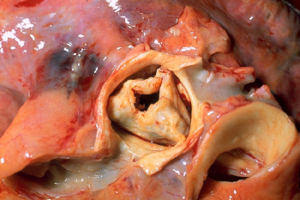
Today we discussed an approach to thrombocytopenia. Here is a brief overview.:
Pseudothrombocytopenia:This is a consequence of platelet clumping as a consequence of the EDTA (lavender top) tube. The presence of this leads to the platelet clumps being miscounted on the automated system. If this is an issue, order the CBC to be drawn in citrate.
Decreased Production:The bone marrow is unable to produce platelets in sufficient quantity as a consequence of toxicity (meds, chemotherapy, alcohol), infection (viral, TB, histoplasma), replacement (cancer, fibrosis, amyloid, sarcoid), or nutrition (folate and B12 deficiency).
Sequestration:
Think of the spleen as a giant sponge and its easy to see how as hypersplenism can reduce counts. We usually see this as a consequence of portal hypertension but primary hypersplenism is also possible. Typically, counts do not drop below 1/3 of the lower limit of normal (50k) if this is the only problem.
Destruction/Consumption:
This can be broken down into mechanical (high flow over prosthetic valves, malignant HTN), immune (HIT, ITP) or consumptive (TTP, DIC) causes. TTP is a medical emergency and this is why the blood film is so important. You need to ensure that there are no schistocytes (RBC helmets) present. I will blog on TTP as a separate post in the near future. Also, remember that ITP is a diagnosis of exclusion.
Our patient was ultimately diagnosed with ITP. A great overview on diagnosis and treatment can be found here, in the recent consensus
guidelines.










